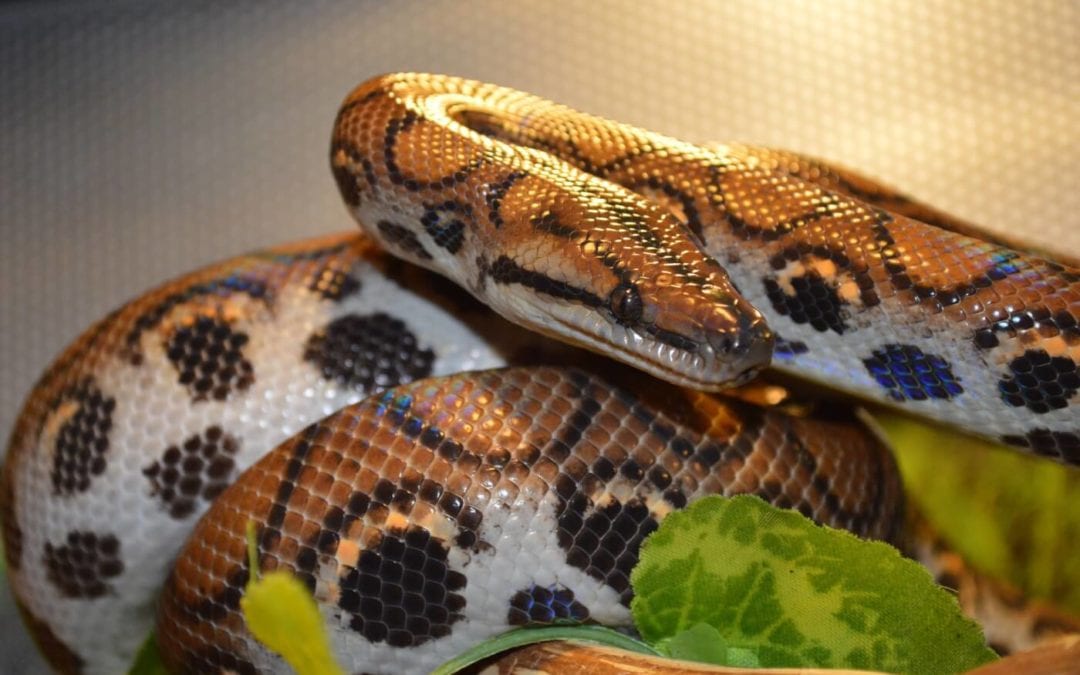
by Pigeon Patrol | Nov 5, 2020 | Pigeon Droppings, Pigeon Patrol's Services, Pigeon Predators, Pigeon Spikes
So you want to learn more about who and what are predators of the pigeon,
Well you’ve come to the right place. Today we will be talking about just that and how these pigeons try to avoid them.
Pigeon Predators
Some common predators of feral pigeons in North America are Foxes, snakes, red-tailed hawks, and owls. The birds that prey on pigeons in North America can range in size from American kestrels to golden eagles and can even include gulls, crows, and ravens.
Foxes are small to medium-sized, omnivorous mammals belonging to several genera of the family Canidae. Foxes have a flattened skull, upright triangular ears, a pointed, slightly upturned snout, and a long bushy tail. Twelve species belong to the monophyletic “true foxes” group of genus Vulpes. These animals can be seen preying on pigeons early in the morning
Snakes are no stranger to pigeons. Snakes are elongated, legless, carnivorous reptiles of the suborder Serpents. Like all other squamates, snakes are ectothermic, amniote vertebrates covered in overlapping scales. Snakes can easily swallow a pigeon in no time. There’s a couple of videos of snakes devouring pigeons.

Another big predator or the pigeon is the Seagull. Gulls, or colloquially seagulls, are seabirds of the family Laridae in the suborder Lari. They are most closely related to the terns and only distantly related to auks, skimmers and even more distantly to waders. Seagulls in Rome are “returning” to their natural status as predators, hunting down rats, pigeons, and other smaller birds as the lack of humans on the streets mean no food scraps are to be found

Another predator of pigeons are the golden eagle. The golden eagle is one of the best-known birds of prey in the Northern Hemisphere. It is the most widely distributed species of eagle. Like all eagles, it belongs to the family Accipitridae. These birds are dark brown, with lighter golden-brown plumage on their napes. The healthy adult golden eagle, due to its impressive size and hunting prowess, has no natural predators. Eggs, chicks, immature eagles, and injured birds are susceptible to a range of predators, such as other birds of prey, including other kinds of eagles and hawks, bears, wolves and cougars.
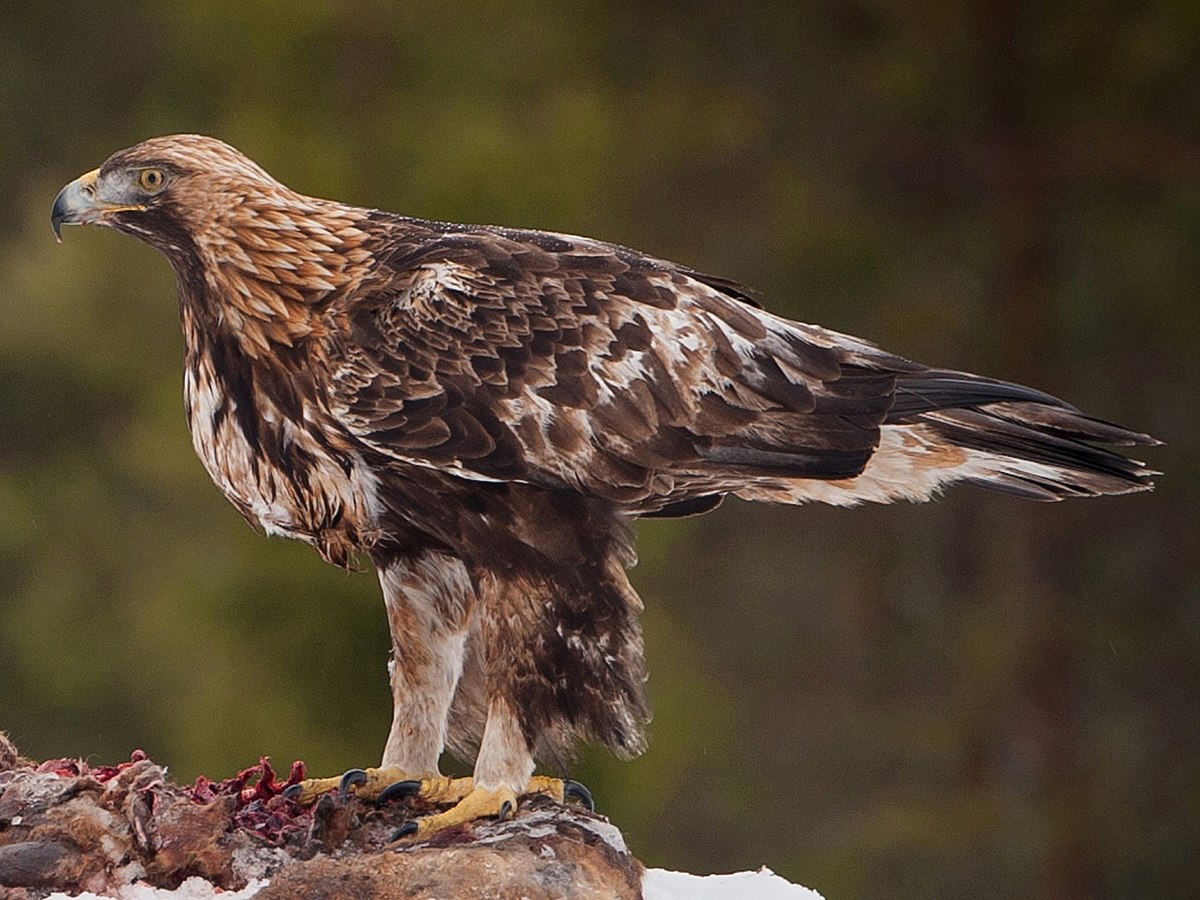
And the biggest predator of pigeons? Man is by far the greatest predator of pigeons.
How The Pigeon Avoid Predators
In most birds, flight is the most important means of escape from predators. Impaired flight abilities due to increased wing loading may increase vulnerability to predation. To compensate for an increase in wing loading, birds are able to independently decrease body mass (BM) or increase pectoral muscle mass (PMM). Comparing nearshore and farshore foraging shorebird species, we develop a theory as to which of these responses should be the most appropriate. We hypothesize that nearshore foragers should respond to increased predation by increasing their PMM in order to promote speed-based escape. Instead, farshore foragers should decrease BM in order to improve agility for maneuvering escape. Experiments on 2 shorebird species are consistent with these predictions, but on the basis of the theoretical framework for evaluating effect size and biological significance developed here, more experiments are clearly needed. Source
They can startle the predator, stand their ground, crouch and stay put, or fly off (Caro 2005). For most birds, flight is the predominant escape mode. A reduction of speed or maneuverability is likely to increase the chance of being depredated once airborne
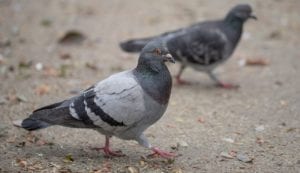
About Pigeon Patrol:
Pigeon Patrol Products & Services is the leading manufacturer and distributor of bird deterrent (control) products in Canada. Pigeon Patrol products have solved pest bird problems in industrial, commercial, and residential settings since 2000, by using safe and humane bird deterrents with only bird and animal friendly solutions. At Pigeon Patrol, we manufacture and offer a variety of bird deterrents, ranging from Ultra-flex Bird Spikes with UV protection, Bird Netting, 4-S Gel and the best Ultrasonic and audible sound devices on the market today.
Contact us at 1- 877– 4– NO-BIRD, (604) 585-9279 or visit our website at www.pigeonpatrol.ca
Bird Gone, Pigeon Gone, Seagull Gone, Pigeon problems, 1-877-4NO-BIRD, 4-S Gel, Bird Control, Pigeon Control, bird repellent,, sonic bird repellent, stainless steel , bird spikes Vancouver, Ultra Sonic Bird Control, Bird Netting, Canada bird deterrents, Pigeon Pests, B Gone Pigeon, Pigeon Patrol, pest controller, pest control operator, pest control technician, Pigeon Control Products, humane pigeon, pigeon deterrents, pigeon traps, Pigeon repellents, Sound & Laser Deterrents, wildlife control, raccoon, skunk, squirrel deterrent, De-Fence Spikes, Dragons Den, Canada bird spikes, Canada pigeon, pigeon control, pigeon patrol, pigeon. Kill pigeons, crow, starling, Pigeon Habitat, Pigeon identifications,
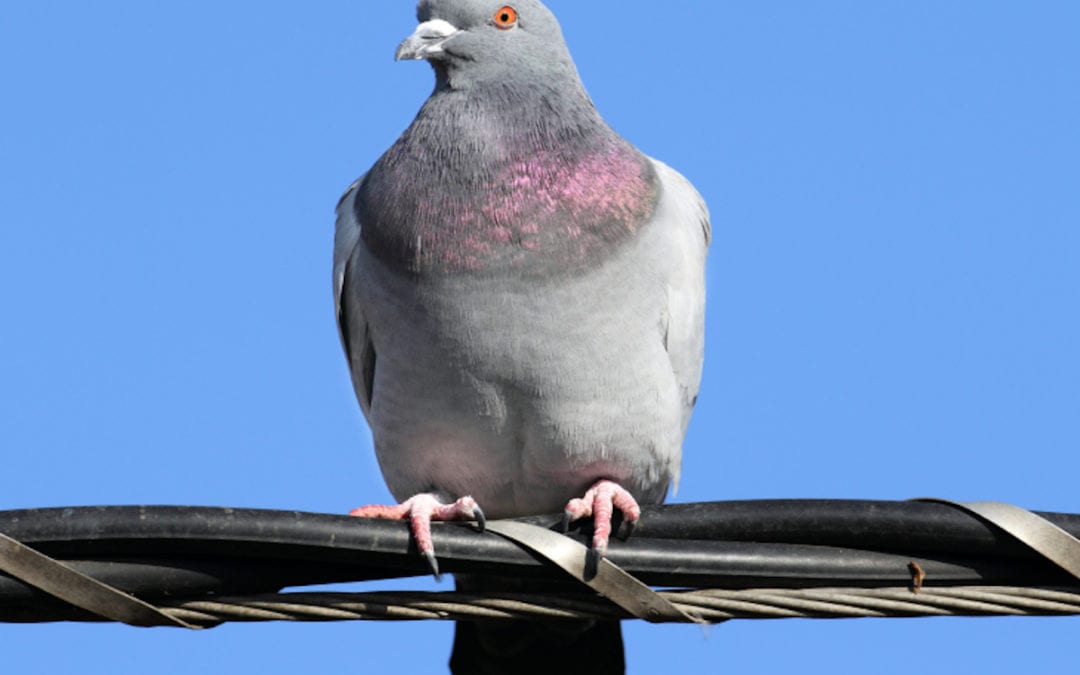
by Pigeon Patrol | Nov 4, 2020 | Animal Deterrent Products, Bird Deterrent Products, Bird Netting, Bird Spikes, Pigeon Control, Pigeon Droppings, Pigeon Patrol's Services
Do You Wanna Know How To Reduce The Numbers In Pigeons Roaming Around?
Keep on reading!
The need to reduce numbers in feral pigeon populations in urban areas has been the subject of intense debate for decades with town and city councils making little impact on the problem due to lack of investment and, in many cases, a reluctance to think laterally. Although the feral pigeon has been a common feature of urban life for the last 100 years there is no doubt that urban flocks are now growing faster than their numbers can be controlled. The reason for this unprecedented rise in feral pigeon numbers is due, almost exclusively, to the availability of food and the methods used to control the birds. Other factors such as the availability of good roosting and breeding facilities also play their part.
The feral pigeon is completely at home in urban environments, exploiting humans for food and using buildings for the purposes of roosting and breeding. This is because the feral pigeon is a descendent of the rock dove, a cliff-dwelling bird that was commonly found feeding and breeding along rocky coastlines prior to its mass exodus inland to make its home alongside man.

Pigeons (Rock Doves) in
their Natural Habitat
The reason that the rock dove chose to desert its natural habitat is the obvious availability of food combined with the optimum breeding and roosting potential offered by buildings, which resemble cliff faces. In its natural habitat the only real predator of the rock dove was the peregrine falcon, an extremely efficient predator that preyed on both pigeons and gull chicks.
In these natural environments flock size was restricted and maintained at levels dictated by the availability of natural food sources and the extent of predation in the area concerned. In urban environments, however, the picture is very different with man being the sole predator of the feral pigeon and food sources guaranteed.

Peregrine Falcon
Today the feral pigeon can be seen in virtually every area of the globe other than the two polar icecaps, exploiting man for food and his buildings for the purposes of roosting and breeding. Man has attempted to control the feral pigeon by using a variety of lethal controls, including poisons, narcotics, cage traps and shooting, and yet the pigeon has shrugged off all these attempts at population control and continued to live and breed in close association with man undeterred. Lethal controls have been complemented by an arsenal of deterrents, provided in an effort to deny or restrict roosting and perching opportunities (thereby reducing guano-related problems). Anti-roosting systems such as anti-roosting spikes have proved extremely effective at displacing pigeons from areas that pigeons roost and nest; but may not be a total solution as pigeons may simply move to other areas nearby.

Rifle Used for Pigeon Culling
So what other options are available to control and contain the problem? The answer to the question really lies in the source of the problem: available food and the means by which we currently control the birds. The use of lethal control as a means of controlling and reducing pigeon populations has been found to have no effect in terms of reducing pigeon flock size. Scientific research has even found that lethal controls can have the opposite effect, resulting in an increased flock size as a result of rejuvenation within the flock. Although we now have the science which proves that all attempts to reduce flock size by lethal means will be a wasted effort, the use of lethal control on pigeon populations is still extensive in the UK and many other countries worldwide. Why then are lethal controls used at all? Culling has been relied upon for decades by the pest control industry as a highly lucrative and revenue-rich service. If it were withdrawn as a control option many contractors would simply go out of business.

Pigeon Loft used for
Breeding Control
The only proven method of reducing pigeon flock size as part of an area-wide control system is to use a method pioneered by PiCAS International involving the use of artificial breeding facilities. This stand-alone method of control has been scientifically* proven to reduce pigeon flock size and is currently being employed throughout mainland Europe by councils and commercial organizations alike. The principle of a scheme using artificial breeding facilities is to provide a pigeon loft or dovecote in which feral pigeons can be encouraged to roost and breed and from which their eggs can be removed as laid and replaced with dummy eggs. This method of breeding control has been found to be extremely effective in reducing flock size and maintaining that reduction indefinitely
Whether a dovecote or pigeon loft is used the principle is the same – pigeons are encouraged to take up residence in the facility provided and as soon as breeding commences their eggs are removed as laid and substituted with dummy eggs. The hen bird will then continue to sit on the eggs for a period of between 18 and 25 days before realizing that the eggs will not hatch, at which time she will then abandon them. If eggs are removed without substituting with dummy eggs the hen bird will re-lay immediately and continue to re-lay each time her eggs are removed.
This may result in long-term health-related problems for the hen bird (such as a severe calcium deficiency) and as the goal is to maintain a small healthy flock of pigeons this is clearly not desirable.
The two types of artificial breeding facility available for use as a breeding control are very different in respect of both design and siting criteria, with a pigeon ‘loft’ normally provided on or possibly even within a building and a dovecote provided in an open space and at ground level. A pigeon loft would normally be provided by a property owner on a specific building or site in an effort to control breeding flocks of feral pigeons within that localized area. A dovecote would normally be provided in a green open space, such as a public park, where the scope of the facility would be the control of large feeding flocks of feral pigeons. In the case of a dovecote-based system a designated public feeding area would normally be provided adjacent to the dovecote in which the general public would be encouraged to feed pigeons, as the food would act to attract the birds to the dovecote facility.
The additional benefit of a designated feeding area, certainly where deliberate and persistent feeding of pigeons is identified as being the root cause of the problem, is that the facility will draw feeders away from their normal feeding areas in town and city centers and relocate them to green areas where pigeons can be better tolerated. Many councils will use the ‘carrot and stick’ approach when offering a system of this nature, providing feeders with legitimized areas in which to feed pigeons but large fines if they continue to feed outside the designated areas.
The main source of all pigeon-related problems in urban areas is deliberate and persistent over-feeding of pigeons by a small number of people who normally feed large quantities of high quality food 7 days a week. To a lesser extent the methods most commonly used to control pigeons (lethal controls) exacerbate and further entrench problems caused by overfeeding. The combination of overfeeding and the rejuvenation of pigeon flocks through the use of lethal controls has resulted in deeply entrenched problems in virtually every city in the Western world.
In some countries the feral pigeon has a religious significance and this fact has also acted to further embed the problem. Muslim, Hindu and Sikh cultures feed pigeons for religious reasons and although the feeding of pigeons for these reasons still continues in many UK towns and cities today, there is a view that the feeding of pigeons is the preserve of the older generation with younger generations taking little interest in the bird. In multi-racial cities like Leicester, for example, where the council embraces the concept of culling and where ethnic minority groups offer huge quantities of food to feral pigeon populations on a daily basis, feral pigeon flocks have grown to unsustainable proportions, creating deeply entrenched problems for property owners.

The problem has become so entrenched that several years ago PICAS International was called in to humanely remove nearly 2000 breeding pigeons and their young from 7 residential roof-spaces in council-owned properties in the city. This indicates the scale of the problem and confirms that citywide overfeeding of feral pigeons, combined with the over-use of culling, will only ever result in upwardly spiraling pigeon flock size.
For any urban pigeon control system to be effective there must not only be area-wide controls provided in the form of pigeon lofts and dovecotes with designated feeding areas, but also an acceptance by property owners that they must play their part. The only body that can be a catalyst for area-wide controls is a council, but if property owners fail to control pigeons on their own properties and allow entrenched roosting and breeding problems to occur or to continue any programme provided by the council will inevitably be compromised. Breeding controls can be astonishingly effective, but if property owners fail to exclude pigeons from their properties those same birds will continue to breed unchecked, further compounding the problem throughout the area. If breeding controls are provided in the form of lofts and dovecotes, however, and if both the local authority and property owners pull in the same direction, a vast majority of pigeons that are excluded during proofing programmes will end up in loft or dovecote facilities where their breeding can be controlled.
The average property owner can provide an extremely effective pigeon control system by installing deterrents in areas where roosting, breeding or perching exists and, if the problem justifies it, by providing an artificial breeding facility in the form of a pigeon loft. The combination of these two controls on one building or site will not only reduce the incidence of soiling in sensitive areas, but will also reduce flock size year on year, resulting in a small manageable flock of pigeons. This must be the goal of every property owner based on the fact that it is simply impossible to eradicate the feral pigeon completely. Although deterrents cannot be considered to be cheap, if the correct choice is made and if the product is sourced and installed by the property owner concerned at least 20-30 years’ protection should be afforded. The correct choice of deterrents is key, with some anti-perching products such as repellent gel only providing between 3 and 12 months’ protection and bird exclusion products like nylon bird netting only offering 5-10 years’ protection. The anti-roosting spike will, however, offer the property owner up to 30 years’ protection without the need to maintain or replace the product, making it an economical and aesthetically pleasing choice.
When a council chooses to provide an area-wide control system for feral pigeons (and very few UK-based councils do provide area-wide systems) expert guidance is critically important. Control systems that are designed to resolve entrenched pigeon-related problems are complex, particularly if the root cause of the problem is persistent and deliberate feeding by the general public. Many UK-based councils have attempted to address the problem by using hard-hitting and aggressive campaigns threatening pigeon feeders with large fines or imprisonment and often undertaking deeply unpopular culling operations at the same time. In each and every case these campaigns have failed due to the fact that the council concerned has failed to understand the underlying reason why people feed pigeons. The ‘problem’ cannot be dealt with as a littering offense or an anti-social act; it must be dealt with by education and persuasion rather than by threats and legislation.
If public feeding is identified to be the cause of the problem a system of controls must be provided that take the impact of persistent feeding into consideration at the same time as identifying large-scale pigeon roosts and closing them down. The principle of an effective area-wide control system using dovecote-based artificial breeding facilities is to provide the general public with an area specifically set aside for the purpose of pigeon feeding and to confirm that feeding is allowed in this area, but nowhere else.
A high-quality public education campaign must be launched confirming what the council is trying to achieve and why. Once a dovecote and designated feeding area facility has been provided in a central and accessible area the task of encouraging the feral pigeon population to feed on the site and take up residence in the dovecote is the next step.
Where pigeon-related problems exist as a result of public feeding the public education campaign will guide feeders to use the dovecote site for this purpose and as a result pigeons will follow, thereby resolving problems for property owners. Where breeding or roosting-related problems exist, however, it will be necessary to exclude pigeons from these areas with physical deterrents or to provide a loft-based artificial breeding facility or a combination of both.
One of the main reasons that area-wide control systems break down is the failure of councils to identify large-scale overnight roosts and force property owners to close them down and exclude pigeons. Councils have the power to force any property owner to undertake works to exclude pigeons from their property or, if the property owner refuses, to undertake those works itself and then bill the property owner. Even in light of these far-ranging powers, however, councils are deeply reluctant to take this action even though it may make render the area-wide control system a failure.
Of course, it is not always advisable or desirable to exclude pigeons from an existing roosting or breeding site, particularly if there is no area-wide control system in place to provide alternative accommodation. This does not stop property owners and companies like Network Rail excluding tens of thousands of pigeons from buildings and roosting sites under railway bridges every year. These excluded birds simply become someone else’s problem and the cycle begins again. This is why it is so important to provide a system of sustainable controls, such as the use of artificial breeding facilities, that will continue to control both breeding and (in the case of dovecote-based systems) feeding indefinitely, with little or no cost involved other than the initial outlay. These systems are popular with the general public and property owners alike as they humanely relocate pigeons to areas where they can be tolerated, accommodated and controlled without the need to resort to unpopular, invasive and unsustainable controls such as culling.
About Pigeon Patrol:
Pigeon Patrol Products & Services is the leading manufacturer and distributor of bird deterrent (control) products in Canada. Pigeon Patrol products have solved pest bird problems in industrial, commercial, and residential settings since 2000, by using safe and humane bird deterrents with only bird and animal friendly solutions. At Pigeon Patrol, we manufacture and offer a variety of bird deterrents, ranging from Ultra-flex Bird Spikes with UV protection, Bird Netting, 4-S Gel and the best Ultrasonic and audible sound devices on the market today.
Contact us at 1- 877– 4– NO-BIRD, (604) 585-9279 or visit our website at www.pigeonpatrol.ca
Bird Gone, Pigeon Gone, Seagull Gone, Pigeon problems, 1-877-4NO-BIRD, 4-S Gel, Bird Control, Pigeon Control, bird repellent,, sonic bird repellent, stainless steel , bird spikes Vancouver, Ultra Sonic Bird Control, Bird Netting, Canada bird deterrents, Pigeon Pests, B Gone Pigeon, Pigeon Patrol, pest controller, pest control operator, pest control technician, Pigeon Control Products, humane pigeon, pigeon deterrents, pigeon traps, Pigeon repellents, Sound & Laser Deterrents, wildlife control, raccoon, skunk, squirrel deterrent, De-Fence Spikes, Dragons Den, Canada bird spikes, Canada pigeon, pigeon control, pigeon patrol, pigeon. Kill pigeons, crow, starling, Pigeon Habitat, Pigeon identifications, reducing pigeons
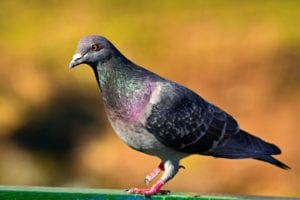
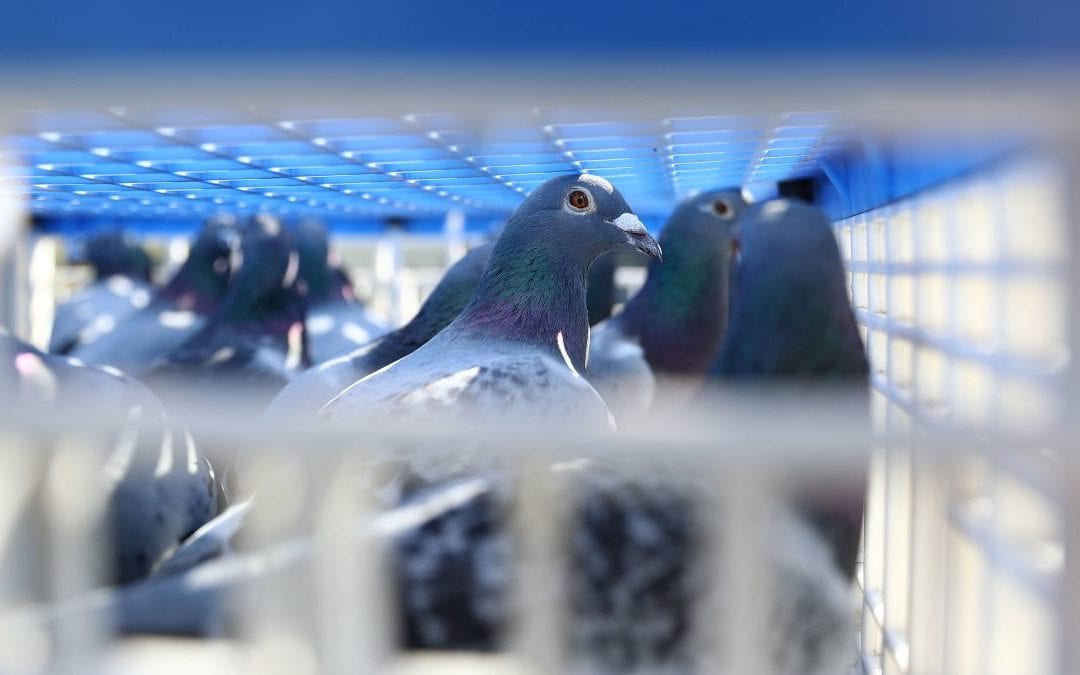
by Pigeon Patrol | Nov 2, 2020 | Animal Deterrent Products, Bird Deterrent Products, history of pigeons, Pigeon Control, Pigeon Patrol's Services
Feral pigeons are the number one urban pest bird, creating a mess and causing damage where they roost, creating a need for pigeon control. Pigeons are descendants of domesticated European homing pigeons, so they have a varied diet and feel at ease making their homes in man-made structures, here is some of the pigeon identifications.
Generally blue-grey in color, with iridescent feathers on the head and neck, problem pigeons often have markings in black, white or brown on the wings and neck. A short neck and small head characterize the standard pigeon; their short legs, hind toes and level front allow for both easy perching on pipes and ledges or walking on flat surfaces. Pigeons generally nest in small, flat areas away from the ground such as building ledges, air conditioning units or window sills. Occasionally pigeons may even lay eggs directly on a protected ledge.
Damage Caused by Pigeon Problems
Pigeon control is important due to the damage and disease problems these problem birds often create. The uric acid in pigeon feces is highly corrosive and can cause extensive damage to metals and other substrates it sits on for long periods. Debris from flocks of problem pigeons often build up, backing up gutters and drains which can cause flooding and roof damage.
Nesting materials and other debris has caused failures in machinery, especially rooftop air conditioning units which are a prime nesting spot for pigeons. Other frequent pigeon problems include slip and fall liability from feces or debris, plus an unclean, dirty company image. The bacteria, fungal agents and ectoparasites found in pigeon droppings are responsible for a host of serious diseases, including histoplasmosis, encephalitis, salmonella, meningitis, toxoplasmosis and more. Many companies also retain significant clean up costs due to the pigeon problems they don’t resolve.
Source
About Pigeon Patrol:
Pigeon Patrol Products & Services is the leading manufacturer and distributor of bird deterrent (control) products in Canada. Pigeon Patrol products have solved pest bird problems in industrial, commercial, and residential settings since 2000, by using safe and humane bird deterrents with only bird and animal friendly solutions. At Pigeon Patrol, we manufacture and offer a variety of bird deterrents, ranging from Ultra-flex Bird Spikes with UV protection, Bird Netting, 4-S Gel and the best Ultrasonic and audible sound devices on the market today.
Contact us at 1- 877– 4– NO-BIRD, (604) 585-9279 or visit our website at www.pigeonpatrol.ca
Bird Gone, Pigeon Gone, Seagull Gone, Pigeon problems, pigeon spikes, 1-877-4NO-BIRD, 4-S Gel, Bird Control, Pigeon Control, bird repellent, Bird Spikes, sonic bird repellent, stainless steel bird spikes, bird spikes Vancouver, Ultra Sonic Bird Control, Bird Netting, Plastic Bird Spikes, Canada bird spike deterrents, Pigeon Pests, B Gone Pigeon, Pigeon Patrol, pest controller, pest control operator, pest control technician, Pigeon Control Products, humane pigeon spikes, pigeon deterrents, pigeon traps, Pigeon repellents, Sound & Laser Deterrents, wildlife control, raccoon, skunk, squirrel deterrent, De-Fence Spikes, Dragons Den, Canada bird spikes, Canada pigeon, pigeon control, pidgon patrol, pidgon. Kill pigeons, crow, starling, Pigeon Habitat, pigeon identifications
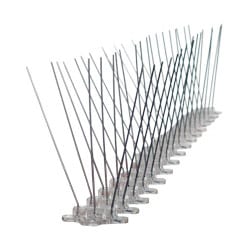
by Pigeon Patrol | Nov 2, 2020 | Animal Deterrent Products, Bird Deterrent Products, Bird Spike, Pigeon Patrol's Services, Pigeon Spikes
Why You Should Use Bird Spikes
You have a bird problem and want to get rid of them. Pigeon Patrol has got you covered with our Bird Spikes. Why? Keep on reading to find out why you should use bird spikes.
What
A bird control spike, is an object consisting of long, needle-like rods used for bird control. They come in a variety of styles and sizes but they work in the same way. Bird control spikes can be attached to building ledges, street lighting, roofs, commercial signage & anywhere else birds can possibly land on to prevent wild or feral birds from perching or roosting.
Why
These spikes make it difficult if not impossible for the bird to land or walk in the area with spikes. They will bring to harm to the bird but will make them uncomfortable that they will have to leave the area. These spikes have glue tracks and screw holes, the spikes can safely be attached to almost any surface. Source
Pigeon Patrol
At Pigeon Patrol, we offer stainless steel bird spikes. Steel spikes offer unique benefits. Not only are they less visible and blend in with a building’s architecture better than plastic spikes, steel spikes also come with a longer guarantee and are able to withstand direct sunlight and higher temperatures Ultra-flex Bird Spikes, prevents birds from landing or roosting on rooftops, ledges, and other surfaces. It comes in either a 5 inch or 8 inch spread and is virtually invisible when installed. The spikes come in 2-foot lengths and measures 4½ inches in height.
- Base made with UV protected recyclable polycarbonate.
- Spikes made with stainless steel,
4½ inches in height.
- Ultra flexible for pipes, beams, signs and light poles.”
- Install with screws, caulking or cable ties
- Spikes come in 2 ft sections with a 10-year warranty
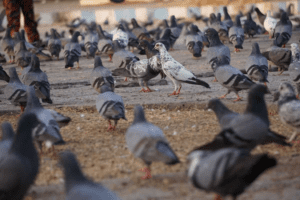
Contact Us For Any Questions!
(604) 585-9279
About Pigeon Patrol:
Pigeon Patrol Products & Services is the leading manufacturer and distributor of bird deterrent (control) products in Canada. Pigeon Patrol products have solved pest bird problems in industrial, commercial, and residential settings since 2000, by using safe and humane bird deterrents with only bird and animal friendly solutions. At Pigeon Patrol, we manufacture and offer a variety of bird deterrents, ranging from Ultra-flex Bird Spikes with UV protection, Bird Netting, 4-S Gel and the best Ultrasonic and audible sound devices on the market today.
Contact us at 1- 877– 4– NO-BIRD, (604) 585-9279 or visit our website at www.pigeonpatrol.ca
Bird Gone, Pigeon Gone, Seagull Gone, Pigeon problems, 1-877-4NO-BIRD, 4-S Gel, Bird Control, Pigeon Control, bird repellent,, sonic bird repellent, stainless steel , bird spikes Vancouver, Ultra Sonic Bird Control, Bird Netting, Canada bird deterrents, Pigeon Pests, B Gone Pigeon, Pigeon Patrol, pest controller, pest control operator, pest control technician, Pigeon Control Products, humane pigeon, pigeon deterrents, pigeon traps, Pigeon repellents, Sound & Laser Deterrents, wildlife control, raccoon, skunk, squirrel deterrent, De-Fence Spikes, Dragons Den, Canada bird spikes, Canada pigeon, pigeon control, pigeon patrol, pigeon. Kill pigeons, crow, starling, Pigeon Habitat, Pigeon identifications,
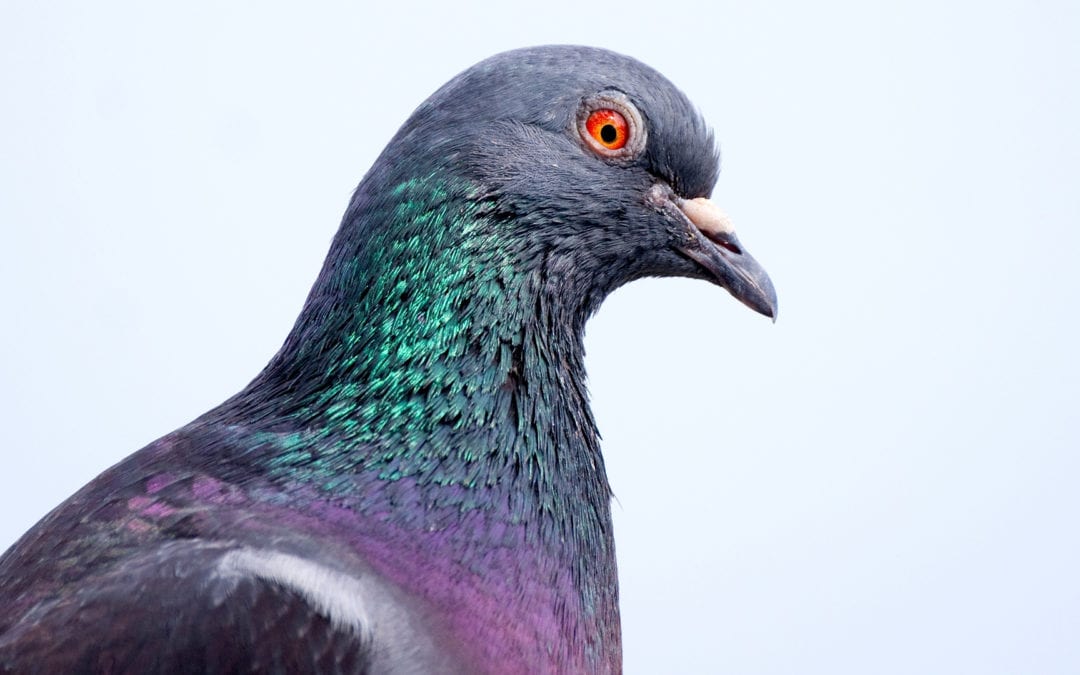
by Pigeon Patrol | Nov 2, 2020 | Pigeon Control, Pigeon Patrol's Services
Pigeon Prevention Methods & Damage Control
Habitat Modification
Some solutions include elimination of feeding, watering, roosting, and nesting sites is important in long-term pigeon control. Discourage people from feeding pigeons in public areas and clean up spilled grain around elevators, feed mills, and rail-car clean-out areas. Eliminate pools of standing water that pigeons use for watering. Modify structures, buildings, and architectural designs to make them less attractive to pigeons.
Exclusion
Pigeons can be excluded from buildings by blocking access to indoor roosts and nesting areas. Openings to lofts, steeples, vents, and eaves should be blocked with wood, metal, glass, rust-proofed wire mesh, plastic or nylon netting with spikes surround it.
Roosting on ledges can be discouraged by changing the angle to 45o or more. Sheet metal, wood, styrofoam blocks, stone, and other materials can be formed and fastened to ledges to accomplish the desired angle. Ornamental architecture can be screened with 1-inch (2.5-cm) mesh polypropylene u.v.-stabilized netting to prevent roosting, loafing, and nesting. To make the netting aesthetically pleasing, it can be spray painted to match the color of the building, but black is often the best choice. The life span of this netting can be as long as 10 years.
In a tool or machinery shed, barn, hangar, or other similar buildings, roosting can be permanently prevented by screening the underside of the rafter area with netting. Nylon netting can be stapled or otherwise affixed to the underside of rafters to exclude birds from nesting and roosting. Panels can be cut into the netting and velcro fasteners can allow access to the rafter area to service equipment or lights.
Porcupine wires are mechanical repellents that can be used to exclude pigeons. They are composed of a myriad of spring-tempered nickel stainless steel prongs with sharp points extending outward at all angles. The sharp points of these wires inflict temporary discomfort and deter pigeons from landing on these surfaces. The prongs are fastened to a solid base that can be installed on window sills, ledges, eaves, roof peaks, ornamental architecture, or wherever pigeons are prone to roost (Fig. 2). Elevate the base with plastic washers and anchor it with electrical bundle straps. Sometimes pigeons and sparrows cover the wires with nesting material or droppings, which requires occasional removal.
A variation of porcupine wires, ECOPICTM, mounts flat to a surface and has a triangular pattern of vertically oriented stainless steel rods.
Bird BarrierTM is another permanent nonlethal mechanical repellent used to exclude pigeons from structures. It is a stainless steel coil affixed to a base-mounting strip that can be attached to structural features as one would with porcupine wires.
Tightly stretched parallel strands of 16-to 18-gauge steel wire or 80-pound+ (36-kg+) test monofilament line can be used to keep birds off support cables, narrow ledges, conduit, and similar areas. Attach L-brackets at each end of the area or item to be protected and fasten the wire to the L-brackets with turnbuckles. Slack is taken out using the turnbuckles. L-brackets should be welded or attached with a cable clamp or aircraft hose clamps (threads on standard radiator clamps become stripped under the high torque loads required for holding L-brackets sup-porting wire over long distances). On heavily used structures, it may be necessary to stretch 3 lines at 2, 5, and 7 inches (5, 12, and 18 cm) above the surface.
Overhead monofilament grid systems, 1 x 1 foot to 2 x 2 feet (30 x 30 cm to 60 x 60 cm), have been used success-fully to reducing pigeon activity in en-closed courtyards. Persistent pigeons will likely penetrate parallel or grid-wire (line) systems.
Electric shock bird control systems (Avi-AwayTM, FlyawayTM, and Vertebrate Repellent System [VRSTM]) are available for repelling many species of birds, including pigeons. The systems consist of a cable durably embedded in plastic with two electrical conductors. Mounting and grounding hardware and a control unit are included. The conductors carry a pulsating electric charge. When pigeons make contact with the conductors and the cable, they receive a shock that repels but does not kill them. The cable can be in-stalled in situations also suitable for porcupine wires and stretched steel wires or monofilament lines. Although these devices and their installation are usually labor intensive and/or expensive, their effectiveness in some cases justifies the investment. These devices have a life span of 8 years on residential structures.
other control methods include:
Frightening
- Propane cannons
- Distress calls
- Mylar-style tape
- Scare-eye balloons
- Long-range acoustic devices
- Avitrol®
Repellents
- Polybutenes and capsaicin-based products
- Methyl anthranilate
Toxicants
Shooting
- .177-caliber pellet guns
- .22-caliber rifles
- Shotgun with No. 7½ shot
Trapping
- Multiple capture cage traps
- Single-bird traps
- Cannon nets
- Hand-held nets
- Mist netting
Other Control Methods
Source
Contact Us For Any Questions!
(604) 585-9279
About Pigeon Patrol:
Pigeon Patrol Products & Services is the leading manufacturer and distributor of bird deterrent (control) products in Canada. Pigeon Patrol products have solved pest bird problems in industrial, commercial, and residential settings since 2000, by using safe and humane bird deterrents with only bird and animal friendly solutions. At Pigeon Patrol, we manufacture and offer a variety of bird deterrents, ranging from Ultra-flex Bird Spikes with UV protection, Bird Netting, 4-S Gel and the best Ultrasonic and audible sound devices on the market today.
Contact us at 1- 877– 4– NO-BIRD, (604) 585-9279 or visit our website at www.pigeonpatrol.ca
Bird Gone, Pigeon Gone, Seagull Gone, Pigeon prevention methodsPigeon problems, pigeon spikes, 1-877-4NO-BIRD, 4-S Gel, Bird Control, Pigeon Control, bird repellent, Bird Spikes, sonic bird repellent, stainless steel bird spikes, bird spikes Vancouver, Ultra Sonic Bird Control, Bird Netting, Plastic Bird Spikes, Canada bird spike deterrents, Pigeon Pests, B Gone Pigeon, Pigeon Patrol, pest controller, pest control operator, pest control technician, Pigeon Control Products, humane pigeon spikes, pigeon deterrents, pigeon traps, Pigeon repellents, Sound & Laser Deterrents, wildlife control, raccoon, skunk, squirrel deterrent, De-Fence Spikes, Canada bird spikes, Canada pigeon, pigeon control, pigeon patrol, pigeon. Kill pigeons, crow, starling, Pigeon Habitat, Pigeon identifications, Pigeon Spikes, Ultrasonic Pest Repellers, Pest Control, Bird Spike Installation, Netting Installation, Pigeon Prevention Methods & Damage Control, Bird netting,
The post Pigeon Prevention Methods & Damage Control appeared first on Pigeon Patrol Canada – Bird Control Products & Services.
Filed Under: 4-S Gel Bird repellent, Animal Deterrent Products, Bird Deterrent Products, Bird Netting, Pigeon Patrol’s Services, Pigeon Spikes, UltraSonic Bird Control
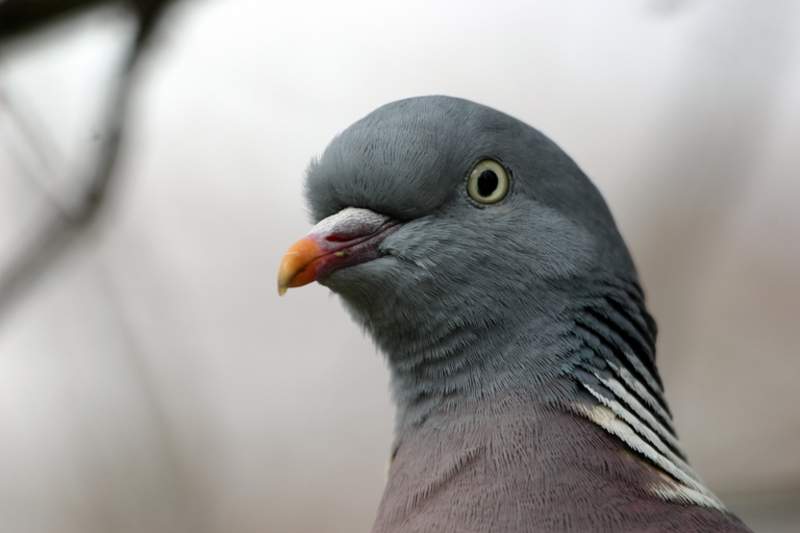
by Pigeon Patrol | Oct 26, 2020 | Bird Deterrent Products, Bird Netting, Bird Spikes, Pigeon Control, Pigeon Patrol's Services
Pigeon Family Life
Pigeons and their family live in groups called “flocks.” Each flock has an equal number of male and female members. A courting male pursues his intended mate on the ground, circling her, with his neck feathers inflated and his tail spread, bowing and cooing all the while. Pigeons mate for life, but if one partner dies the survivor generally will attempt to find another mate.
Pigeons show a strong affinity for human-built structures. Nests, a haphazard combination of twigs, leaves, and a few feathers, are built on window ledges, behind signs, and under bridges. Parents take turns incubating the clutch of one or two white, unmarked eggs for between 16 and 19 days. After the eggs hatch, both parents feed the baby pigeons, or squabs, a crop secretion called “pigeon milk,” which is produced from the lining of the crop, a sac-like food storage chamber located under the bird’s esophagus. The milk is a highly nutritious and an efficient way of feeding young. Squabs fledge at four to six weeks of age but remain dependent on their parents for as long as the adults will tolerate them — generally another one or two weeks. Individuals may be capable of breeding at six months of age.
Pigeons leave their nesting and roosting sites during daylight hours to search for food, but they return at night, as well as periodically during the day when raising young.
source
About Pigeon Patrol:
Pigeon Patrol Products & Services is the leading manufacturer and distributor of bird deterrent (control) products in Canada. Pigeon Patrol products have solved pest bird problems in industrial, commercial, and residential settings since 2000, by using safe and humane bird deterrents with only bird and animal friendly solutions. At Pigeon Patrol, we manufacture and offer a variety of bird deterrents, ranging from Ultra-flex Bird Spikes with UV protection, Bird Netting, 4-S Gel and the best Ultrasonic and audible sound devices on the market today.
Contact us at 1- 877– 4– NO-BIRD, (604) 585-9279 or visit our website at www.pigeonpatrol.ca
Bird Gone, Pigeon Gone, Seagull Gone, Pigeon problems, pigeon spikes, 1-877-4NO-BIRD, 4-S Gel, Bird Control, Pigeon Control, bird repellent, Bird Spikes, bird law sonic bird repellent, stainless steel bird spikes, bird spikes Vancouver, Ultra Sonic Bird Control, Bird Netting, Plastic Bird Spikes, Canada bird spike deterrents, Pigeon Pests, B Gone Pigeon, Pigeon Patrol, pigeon family pest controller, pest control operator, Bird law pest control technician, Pigeon Control Products, humane pigeon spikes, pigeon deterrents, type of birds, pigeon traps, Pigeon repellents, Sound & Laser Deterrents, wildlife control, raccoon, skunk, squirrel deterrent, De-Fence Spikes, Dragons Den, Canada bird spikes, Pigeon behavior ,Canada pigeon, pigeon control, pigeon patrol, pigeon. Kill pigeons, crow, starling, Pigeon Habitat,
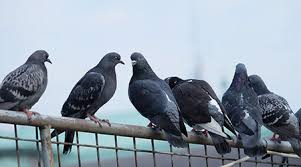





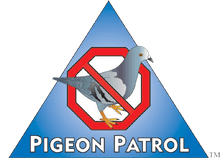

 Pigeons (Rock Doves) in
Pigeons (Rock Doves) in Peregrine Falcon
Peregrine Falcon
 Rifle Used for Pigeon Culling
Rifle Used for Pigeon Culling









